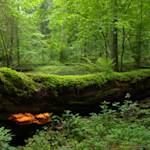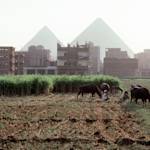Central Park, urban oasis for migratory birds
1858 CE • New York City
"Central Park is located along the Atlantic Flyway, a major migratory route for birds extending from South America to Greenland . . . In an average year, an ambitious birder can spot about 200 species of birds in the Park, many of them migrants . . . If you're a young bird like a small songbird on your first migration, the light from the metropolitan area . . . tends to draw you in. They’re migrating after dark and navigating using starlight. The urban light pollution pulls them in. They've been flying all night. Daylight comes, they look around, and it's just a sea of concrete and buildings. Then you have this enormous green oasis right in the middle of Manhattan . . . Because we know now from radar data... how many birds are being drawn into urban areas just because of light pollution, urban parks and urban greenspaces turn out to be incredibly important for conservation . . . A lot of these birds that are attracted to urban areas are young birds on their first migration. It's critical to keep them in the population so the populations don't decline further. [Since 1970, the North American bird population has declined by 29%, amounting to the loss of three billion birds . . .] And so whatever we can do in urban parks to improve and restore bird habitat by . . . planting native species that produce lots of insect food and lots of fruit and berries for them at that critical time of the year, providing weedy, tangley, thickety habitat for them, lots of escape cover for them, providing areas of water for them, is vital . . . My hat is off to the [Central Park] Conservancy and everyone working to improve the habitat there. It’s only going to become more important for migratory birds as the years go by."
- Scott Weidensaul, ornithologist and author
"In Conversation with Ornithologist and Author Scott Weidensaul on Bird Migration," Central Park Conservancy.
Image: Carol M. Highsmith, Aerial view of New York City, in which Central Park dominates. Highsmith, Carol M., 1946- Carol M. Highsmith Archive. Library of Congress Prints and Photographs Division Washington, D.C. 20540 USA


Learn about Maya Lin’s fifth and final memorial: a multi-platform science based artwork that presents an ecological history of our world - past, present, and future.

Discover ecological histories and stories of former abundance, loss, and recovery on the map of memory.

Learn how we can reduce our emissions and protect and restore species and habitats – around the world.

See how art can help us rethink the problems we face, and give us hope that each one of us can make a difference.

Help make a global memorial something personal and close to home. Share your stories of the natural world.


